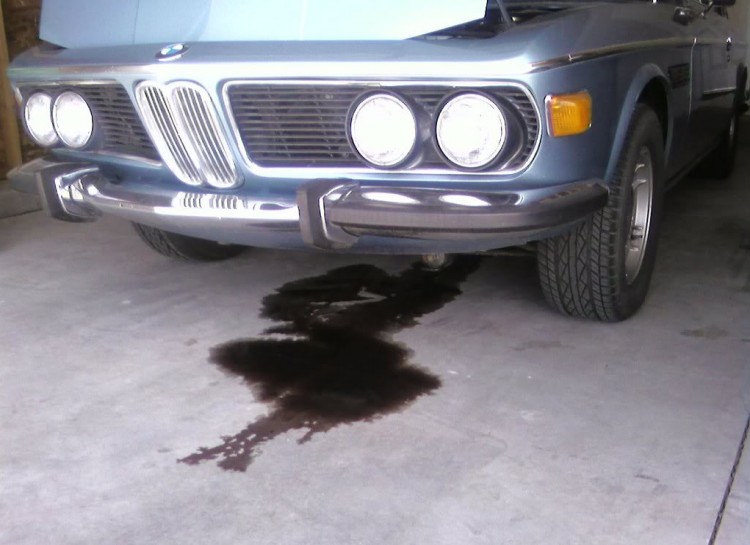I can’t stress enough the importance of engine oil to your car or truck’s engine. Your oil serves many purposes. Without it, you’ll be on the side of the road in no time. This is why it can be so unsettling when you peek underneath your vehicle to find an oily black spot — you’ve got an oil leak. Before you panic, not all oil leaks are a big deal. That’s not entirely true, anything that could result in your engine running very low or out of oil could be a big deal. But you still don’t need to panic about a little spot on the driveway. Besides, you check your oil regularly, don’t you? Most cars with 100,000 miles or more will burn a little oil between oil changes, again not a reason to panic if it’s a hair low from time to time. Add engine oil as needed between changes and you’ll be fine.

Back to that oil leak you discovered. There are a few places the oil leak could be coming from. The trick is figuring out the source of the leak and how fast it’s coming out.
The most reliable way to ring the source of your oil leak is to clean the engine — I mean really clean it. With a clean engine you’ll be able to see the oil start to ooze before it’s all over the place. This is especially important if you’ve been adding oil regularly between oil changes because you may have a sizable leak to deal with. If you can’t clean the engine first, you’ll need to look for the area where the oil is freshest. When the oil escapes the engine, it’s very fluid. As it drips and runs around it picks up gunk, gets thick and lumpy, and is generally nastier.
Whether you’re dealing with a clean or dirty engine, start your oil leak inspection at the top of the engine. There are a few things at the very top that can be the source of an oil leak. The valve cover gasket is the most likely culprit if your leak is high on the engine. But there is also a PCV valve on many cars that has a pipe connected to the crankcase. If this becomes worn or loose at any point it can cause a leak.
As your inspection moves down the engine, you’ll get to a spot about halfway down that can be the source of an oil leak — the head gasket. Your head gasket goes between the cylinder head (or heads) and the engine block. Oil travels through passageways that connect to each other on both sides of this gasket, so there is lots of oil running around here. It’s supposed to stay on the inside, but if your head gasket has gone bad you can spring a leak. Another sign of a blown head gasket would be oil in your coolant, which appears as a light brown froth that floats through your cooling system.
Moving down even further, you will get to the gasket that you hope is the source of your oil leak — the oil pan gasket. Your oil pan hangs onto the very bottom of the engine, and is the place that you drain your oil for an oil change. There is always plenty of oil sloshing around in the oil pan, so even a small gasket failure can ooze plenty.
Of course, there are other places that you can leak oil, but these are the most common. If you don’t find it at any of the usual spots, continue to search until you find the leak. Wherever it is, it will need to be fixed or dealt with by continually adding oil to the engine.
Source: autorepairs
